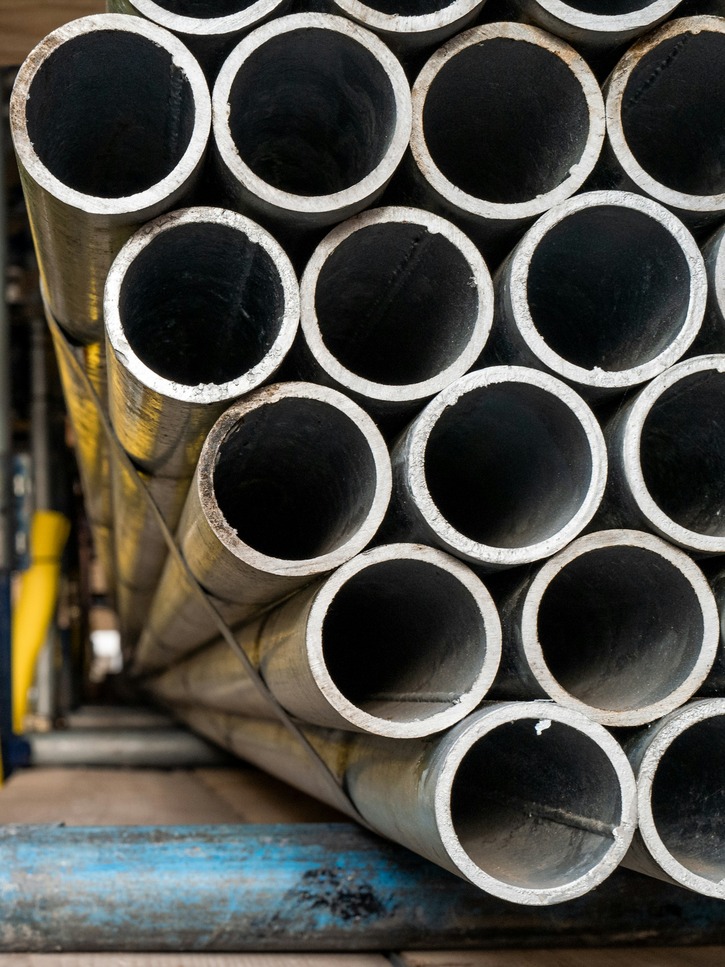The Surge in Chinese Steel Exports Sparks Concerns and Trade Tensions
1 Apr, 2024
In recent years, the global steel industry has witnessed a significant uptick in Chinese steel exports, raising concerns among steel-producing nations and triggering trade tensions on the international stage. As China solidifies its position as the world's largest steel producer, the ramifications of its export-driven strategy reverberate across markets and economies worldwide. This article delves into the growth of Chinese steel exports, examines its implications for the steel trade, and explores the resulting trade tensions and challenges.
Understanding the Rise in Chinese Steel Exports
China's steel industry has experienced exponential growth over the past few decades, fueled by robust domestic demand, government stimulus measures, and substantial investments in infrastructure and construction projects. As a result, China has emerged as the leading producer and consumer of steel globally, accounting for a significant share of the world's steel output.
However, China's steel production capacity far exceeds domestic demand, leading to an oversupply scenario. To alleviate domestic pressure and sustain its steel industry's growth momentum, China has increasingly turned to the export market, flooding global markets with competitively priced steel products.

Key Factors Driving Chinese Steel Exports:
- Excess Production Capacity: China's steel industry boasts substantial production capacity, supported by state-of-the-art facilities and economies of scale. The surplus capacity enables China to produce vast quantities of steel, surpassing domestic demand and necessitating export avenues to absorb the excess output.
- Competitive Pricing: Chinese steel exporters benefit from lower production costs, owing to factors such as abundant raw materials, economies of scale, and government subsidies. This cost advantage allows Chinese steel products to be competitively priced in international markets, often undercutting domestic producers in other countries.
- Global Demand Dynamics: Despite concerns about quality and environmental standards, Chinese steel exports continue to find eager buyers in regions with high demand for steel, such as Southeast Asia, Africa, and Latin America. Infrastructure development, urbanization, and industrialization projects drive demand for steel products, creating lucrative export opportunities for Chinese manufacturers.
- Trade Policies and Subsidies: China's trade policies and subsidies play a significant role in facilitating steel exports. Government support, including financial incentives, tax rebates, and export credits, bolster the competitiveness of Chinese steel products in the global market, enabling exporters to maintain market share and expand their reach.
Implications of Chinese Steel Exports on the Global Steel Trade
The surge in Chinese steel exports carries multifaceted implications for the global steel trade, affecting steel-producing nations, downstream industries, and international trade dynamics.
- Impact on Domestic Steel Producers: The influx of Chinese steel exports poses a formidable challenge to domestic steel producers in other countries. Unfair competition from low-priced Chinese imports can erode market share, depress prices, and undermine the viability of domestic steel industries, leading to job losses and industry consolidation.
- Quality and Safety Concerns: Chinese steel exports have been subject to scrutiny and criticism regarding quality, safety, and adherence to international standards. Instances of substandard and counterfeit steel products raise concerns about product reliability, performance, and safety, prompting calls for stricter quality control measures and regulatory oversight.
- Trade Imbalances and Protectionism: The surge in Chinese steel exports exacerbates trade imbalances and triggers protectionist sentiments in importing countries. Concerns about unfair trade practices, including dumping, subsidies, and currency manipulation, prompt calls for trade remedies such as tariffs, quotas, and anti-dumping duties to safeguard domestic industries and address trade distortions.
- Global Overcapacity and Price Volatility: China's export-driven strategy contributes to global steel overcapacity, exacerbating price volatility and market instability. Excessive steel production and exports exert downward pressure on global steel prices, impacting profitability and investment decisions across the steel value chain.
Addressing Trade Tensions and Challenges
Addressing the challenges posed by the surge in Chinese steel exports requires collaborative efforts and proactive measures at the national and international levels. Key strategies include:
- Multilateral Dialogue and Cooperation: Engaging in constructive dialogue and cooperation through international forums such as the World Trade Organization (WTO) facilitates discussions on trade issues, promotes transparency, and seeks consensus-based solutions to address global steel overcapacity and trade distortions.
- Enforcement of Trade Remedies: Implementing and enforcing trade remedies, including anti-dumping measures, countervailing duties, and safeguard measures, provides a legal framework to address unfair trade practices and protect domestic industries from the adverse effects of subsidized and dumped imports.
- Quality Certification and Standards Compliance: Strengthening quality certification processes and ensuring compliance with international standards enhances the credibility and competitiveness of steel products in global markets. Promoting adherence to quality, safety, and environmental standards fosters consumer confidence and reduces the proliferation of substandard imports.
- Diversification of Export Markets: Diversifying export markets and reducing reliance on a single market or region helps mitigate risks associated with market fluctuations and trade disruptions. Exploring emerging markets, investing in market research, and cultivating strategic partnerships enhance market resilience and facilitate sustainable export growth.

The growth of Chinese steel exports presents both opportunities and challenges for the global steel industry and international trade. While Chinese steel products contribute to infrastructure development and economic growth in importing countries, they also pose significant competitive pressures and trade tensions for domestic steel producers worldwide. Addressing the complexities of global trade and trade data requires concerted efforts to promote fair competition, uphold quality standards, and foster a level playing field for all stakeholders. By embracing dialogue, cooperation, and proactive measures, the steel industry can navigate the challenges posed by Chinese steel exports and foster a more sustainable and balanced global trade environment.
FAQs:
Q1. What are the main concerns associated with the surge in Chinese steel exports?
Ans: The surge in Chinese steel exports raises concerns about unfair competition, market distortions, job losses in domestic industries, quality and safety issues, and trade tensions among steel-producing nations.
Q2. How do Chinese steel exports affect domestic steel industries in other countries?
Ans: Chinese steel exports can undercut domestic steel producers in other countries by offering lower-priced products, leading to decreased market share, depressed prices, and potential industry consolidation or closures.
Q3. What measures can be taken to address the challenges posed by Chinese steel exports?
Ans: Strategies to address the challenges include enforcing trade remedies, promoting quality certification and standards compliance, diversifying export markets, and engaging in multilateral dialogue and cooperation to address global steel overcapacity and trade imbalances.
Q4. What role do trade policies and subsidies play in facilitating Chinese steel exports?
Ans: Trade policies and subsidies, including financial incentives, tax rebates, and export credits, bolster the competitiveness of Chinese steel products in the global market, enabling exporters to maintain market share and expand their reach.
Q5. How can countries balance the benefits of Chinese steel imports with the need to protect domestic industries?
Ans: Countries can balance the benefits of Chinese steel imports with the need to protect domestic industries by implementing trade remedies, promoting fair competition, strengthening quality standards, and diversifying export markets to reduce reliance on a single source of imports.





